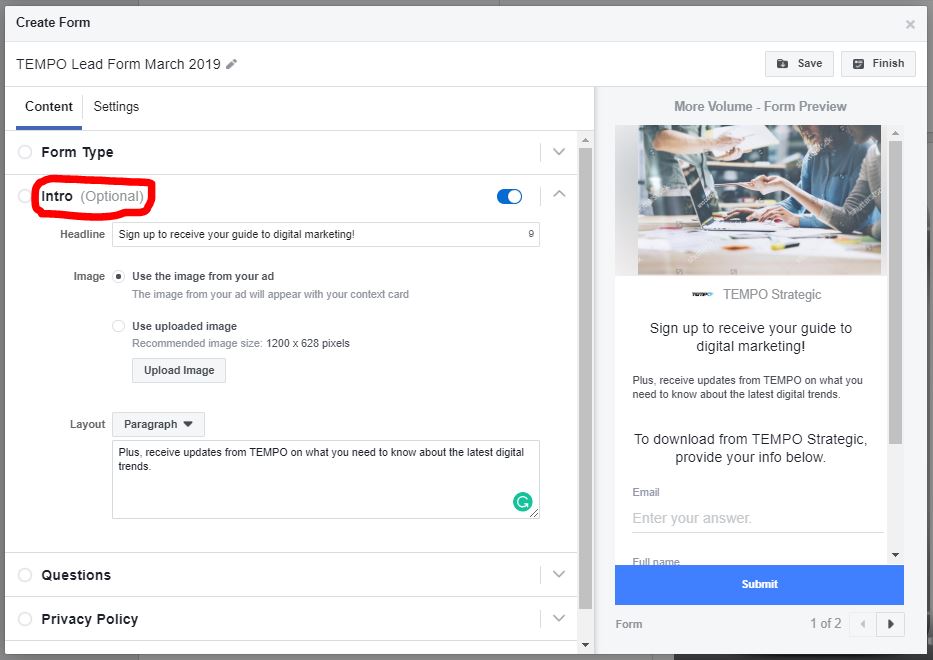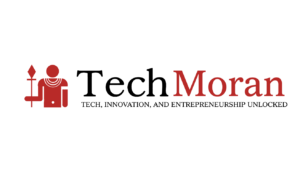Have you tried creating lead forms on Instagram and Facebook?
I saw a popup ad of a form that I could fill in as an ad if I wanted to get more information about the product that they were promoting. So obviously if you’re reading this you’ve likely hit a snag when creating a Lead Form [or Lead Generation] campaign on Facebook Ads Manager, so you turned to Google, and Google in turn sent you to us. Hello! We are happy to help.
What is a lead form?
You can ask for as little as just an email. Or you can create fields for email, first name, last name, phone number, street address, city, state/province, country, post code, date of birth, gender, marital status, relationship status, military status, job title, work phone number, work email, company name, and even national ID number.
So, by eliminating the step of sending someone out of their beloved Instagram app to your (possibly clunky, kinda-sorta mobile-optimized) landing page to collect their email, you get many more leads for the same spend.
So, how do you create a lead form?
1.Open up Ads Manager

2. Select your desired ad account from the dropdown menu
>Click the dropdown menu just below the upper border on Ads Manager, then click on the account you’re looking for. In the example below, we’ll select “Test”
3. Where to click
Click the green + Create button on the left side of the page or the grey Create Ad button in the middle of the page.
4. While you’re on ads manager
Ads Manager will likely default you to the Quick Creation pop-up. This functionality is fine if you know exactly what you’re doing, but, since you’re reading this, let’s assume you don’t. Switch to Guided Creation by hitting the button on the top right of the pop-up.
5. Choose an objective for the campaign
- For Lead generation campaigns, choose the Lead generation objective
6. Name your campaign
- It’s best to choose a name that can be quickly and clearly understood and differentiated from other campaigns, so be specific. We’ll use “Lead Gen Example Campaign March 2019”
7. Decide whether you want Facebook to create a split test using your Ad Sets, use Budget Optimization between ad sets, or use neither option
What kind of test do you want to run? A split test will preclude you from using the Budget Optimization feature (because the Split Test is already controlling budgets across ad sets). This is a good option if you’re starting fresh and know little about your brand’s different potential audiences and their performance and want to build up robust data and insights about audience and creative as part of a long term strategy.
Budget optimization is a good option if you have multiple audiences you want to reach or multiple creative options you want to put out there but care most about the end goal of the campaign. You might try this option if you already have some good knowledge about different types of audience and creative those audiences respond to by creating a lot of different ad sets with different constellations of audience/creative/placement/delivery options and letting Facebook’s algorithm do the work to spend most on the best performing ad set. This is a quick and dirty way to make a campaign perform. If you choose neither option, you will set budget on the ad set level. This option makes sense if you have only one audience or specific spend requirements for different audiences or creative options. Generally, selecting one of the two options above is the better choice.
8.Choose a Form Type – More Volume or Higher Intent
- Here we come back to the concept of Friction discussed above. More Volume makes completing the form simpler by removing an information review step and so reducing friction. But it may lead to less qualified leads. Higher Intent adds an information review step to the process and so increases friction but likely leads to more highly qualified leads.
- In our example, we are just promising people a guide to digital marketing so we want to cast a wider net. We are less concerned with qualifying leads at this point. So we will choose “More Volume.”
8. Edit the Intro
- Draft a headline that reminds people what you are promising them for their information.
- Decide whether you want to use the image from your ad or a different uploaded image.
- BEST PRACTICE: Use the image from your ad on your lead form to give the user a more seamless experience from viewing the ad to submitting their info.

The above are usually the most challenging bits but once you’ve set the campaign you’ll be able to set up your ad quite well.

